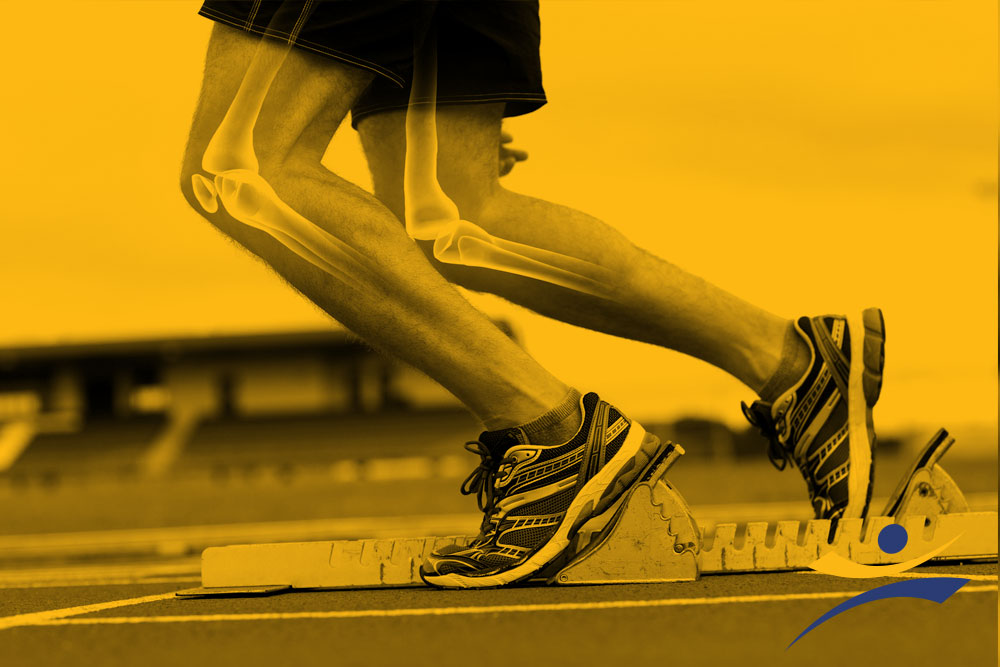
School may have just started on Long Island, but fall athletics are already in full swing! Whether your student-athlete is running cross country, dominating the soccer field, or gearing up for football season, staying healthy is always a top concern. At Central Orthopedic Group, we see a wide range of sports-related injuries in young athletes — many of which can be avoided with proper warm-up, conditioning, and equipment.
Unfortunately, accidents still happen, even under the best circumstances. Some injuries are mild and heal quickly, while others can sideline athletes for weeks or even require surgical treatment. Our orthopedic specialists frequently diagnose and treat the following five most common fall sports injuries in student athletes across Long Island.
1. Sprains & Strains
Sprains and strains are the most common types of injuries we treat — and not just in sports. These injuries can happen to anyone, but athletes are especially vulnerable due to the physical stress their bodies endure.
A sprain occurs when a ligament — the tissue that connects bone to bone — is overstretched or torn. This typically affects the wrist, ankle, or knee. A strain, often called a “pulled muscle,” happens when a muscle or tendon is stretched too far or torn. Strains often occur in the hamstring, groin, or back. Both injuries can range from mild to severe, with symptoms like swelling, bruising, pain, and limited mobility.
For most sprains and strains, rest, ice, compression, and elevation (RICE) are the first steps in treatment. However, more severe injuries may require bracing, physical therapy, or even surgery.
2. Knee Injuries
The knee is one of the most complex joints in the body — and one of the most vulnerable, especially in high-impact sports. More than 5 million people in the U.S. see orthopedic surgeons each year for knee-related issues.
Common knee injuries include:
- Runner’s knee (patellofemoral pain syndrome)
- Tendonitis from overuse
- ACL, MCL, or meniscus tears caused by sudden twisting or impact
These injuries can range from mild irritation to severe ligament damage that requires surgery and long-term rehabilitation. Soccer, football, and lacrosse players on Long Island are particularly at risk for knee injuries.
3. Shin Splints
Shin splints are a common overuse injury that affects runners and athletes who do a lot of stop-and-go motion. The pain is felt along the tibia — the shin bone — and can sometimes radiate to the ankle or foot.
On Long Island, where many school athletes practice on hard surfaces or turf fields, shin splints are especially common. Contributing factors include:
- Improper running technique
- Lack of stretching or warm-up
- Worn-out footwear
- Flat feet or improper arch support
Most cases can be managed with rest, ice, and better support. However, if ignored, shin splints can lead to stress fractures, which take much longer to heal.
4. Broken Bones (Fractures)
Fractures — or broken bones — are a serious injury that can occur suddenly during a collision, fall, or awkward landing. There are two main types:
- Acute fractures: Caused by a one-time traumatic event, such as a tackle or fall.
- Stress fractures: Small cracks in the bone caused by repetitive impact over time.
Common sites for fractures include the wrist, collarbone, ankle, and forearm. These injuries usually require immediate evaluation by an orthopedic specialist. Some fractures can be treated with immobilization, while others may require surgical repair and months of rehabilitation.
5. Dislocations
A dislocation occurs when a bone is pushed out of its normal position in a joint, often due to a fall or collision. This injury is especially common in contact sports like football or hockey.
Dislocations most commonly affect the shoulder, elbow, or fingers. They cause intense pain and immediate loss of joint function. In most cases, a dislocation requires emergency treatment to reposition the joint, followed by an evaluation for potential soft tissue damage.
After the joint is realigned, rest and physical therapy are essential to prevent further injury and strengthen surrounding muscles and ligaments.
Protecting Student Athletes on Long Island
Injuries are an unfortunate part of sports, but many can be prevented with proper training, technique, and preparation. Parents and coaches across Long Island should encourage athletes to:
- Warm up and stretch before games and practices
- Use proper protective gear
- Get enough rest between games
- Stay hydrated and well-nourished
- Report pain or discomfort early to avoid worsening the injury
When to See an Orthopedic Specialist
If your student athlete suffers an injury, it’s important to get a professional evaluation — especially if the pain doesn’t subside after a few days of rest. At Central Orthopedic Group, we treat sports injuries in children and teens throughout Plainview, Massapequa, and Rockville Centre. Our team offers advanced diagnostic tools, personalized treatment plans, and expert care to help your child return to the field safely.
Whether your child needs a brace, physical therapy, or orthopedic surgery, we’re here to help every step of the way.
